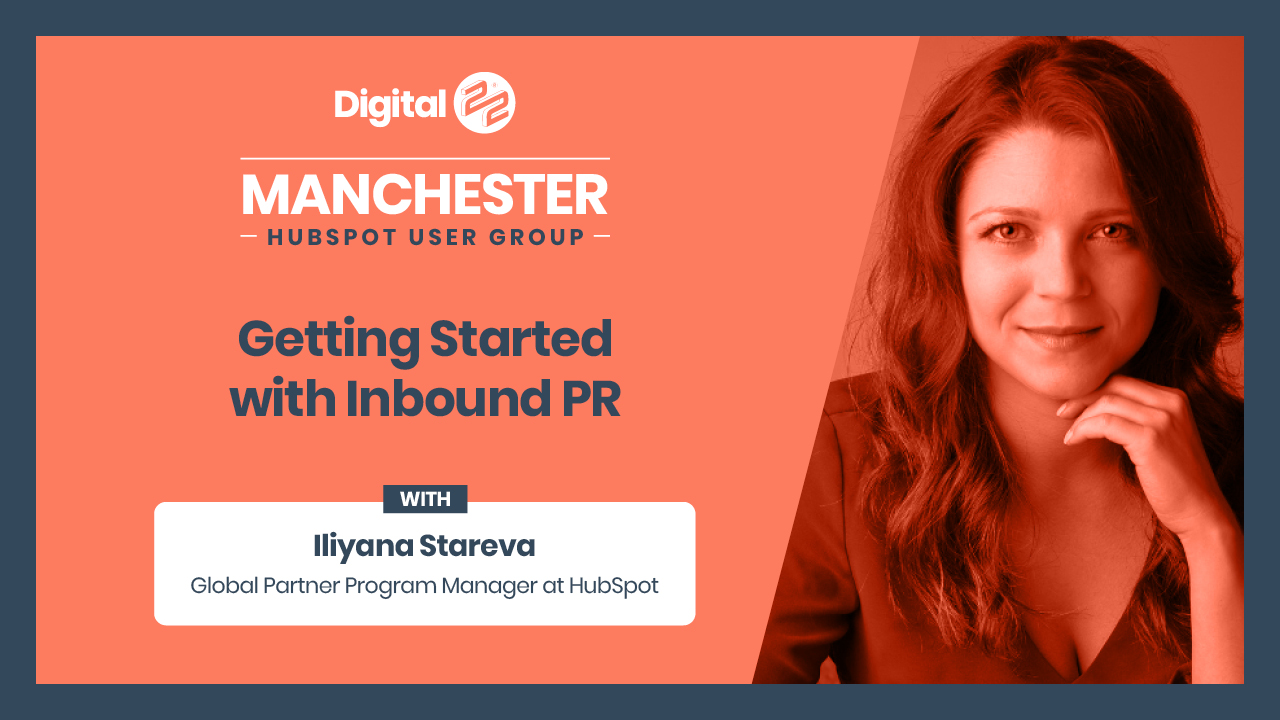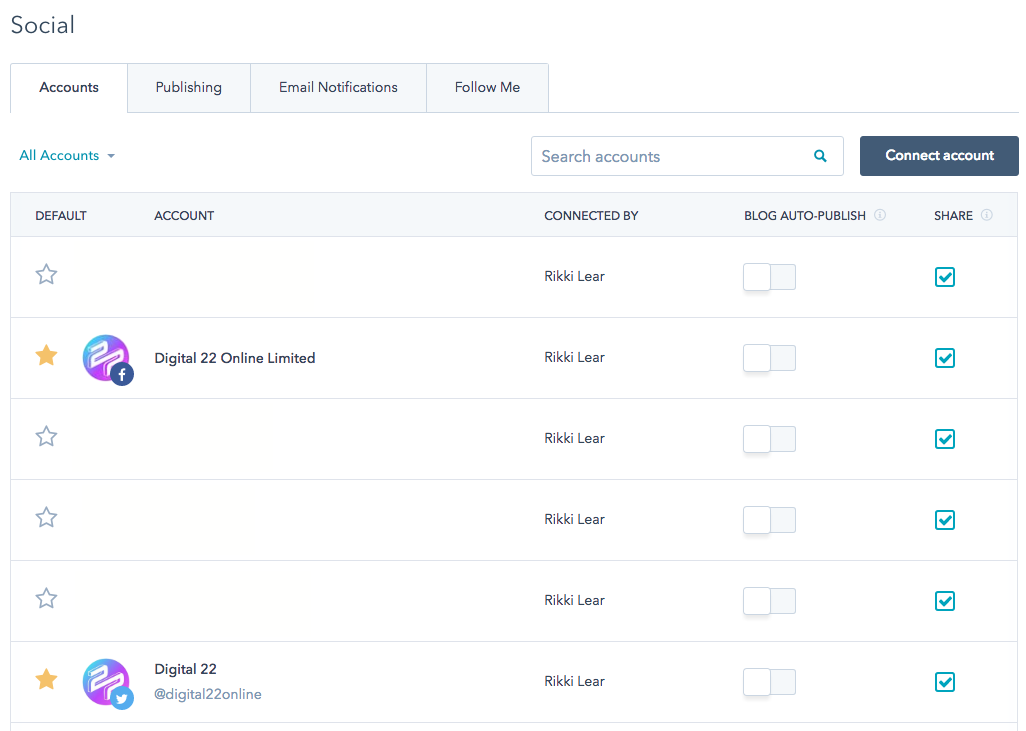The biggest selling point of HubSpot is that it’s an all-in-one marketing platform, but that’s also...
At our latest HubSpot User Group event in Manchester, we were joined by Global Partner Program Manager at HubSpot and PR expert, Iliyana Stareva. She talked about the main steps to getting started with Inbound PR and how companies can successfully implement this new method into their strategies. Here are the key takeaways which you need to know about:

Why is PR broken?
The PR industry has faced some tough times in recent years. Traditionally, PR people would reach out to brick and mortar establishments with the hope of building strong relationships with journalists and other influencers. Nowadays, technology and other contributing factors mean there’s so much more to consider.
In addition to this, there’s also been a shift in behavioural patterns from journalists over the last decade. Iliyana discussed the fact that similarly to consumers, most journalists no longer want to be interrupted by unnecessary noise. This means PR people now have to think of fresh and innovative ways to connect with journalists and convince them to check out their content.
For example, once upon a time, someone in PR would write a press release and email it to hundreds of journalists in the hope that five of them respond and use the press release within their publication. Today, people can see this as intrusive and most probably ignore the email. People need to think outside the box and that’s where inbound comes into the equation.
How can inbound help?
Content is one of the most important components of Inbound Marketing, and as Iliyana points out in her talk, PR people are usually experts in creating content. Those who do it best are masters at gaining attention through awesome storytelling.
According to research from CIPR, 76% of people in PR spend some or most of their time copywriting and editing, yet pretty much everyone within the industry really struggles to find effective ways to measure their results. This is where inbound can make all the difference.
Inbound starts with the numbers. Key metrics and performance data has allowed businesses to have greater insight into how they’re performing than ever before. Marketing automation software such as HubSpot and Google Analytics have made it much easier to measure vital business KPIs.
In order to remain competitive, the PR function of any business needs to make the transition and start using inbound methods within their strategy. When done properly, PR is one of the most powerful means of marketing communication.
However, those who have the ability to measure their PR performance can become pioneers who change the shape of the whole industry.
How to do inbound PR?
Inbound PR is a pretty new concept. There aren’t many out there who have mastered the art. However, Iliyana has written a book which is completely dedicated to the topic and she kindly outlined eight steps which companies can take to start implementing Inbound into their own PR strategy.
These are as follows:
1. Set your goals
Goals are particularly prevalent within the PR industry. When someone writes a press release, it’s expected to feature in a certain amount of publications, yet goals like this are very top-level. Iliyana discusses that one of the first steps of Inbound PR is to dig deeper into these goals and understand why they’ve been set in the first place.
2. Nail your stakeholder personas
Once familiar with the goals which have been set and what they hope to achieve, nailing the creation of stakeholder personas is the next step within the Inbound PR process.
These are different from customer personas. Instead, they focus more on the different types of intermediaries who a PR person may deal with on a day-to-day basis, such as journalists and influencers.
Iliyana stresses that it’s important to never make assumptions when creating your stakeholder personas and instead, you should always back up your ideas with data and truthful information. This can be acquired through focus groups, interviews, general conversations and using trusted sources on the internet.
*Here are some of the key questions someone may ask themselves when creating their own stakeholder persona*
-1.png?width=837&name=Screenshot%202019-06-20%20at%2012_12_37%20(1)-1.png)
3. Understand your stakeholders journey
Similarly to a buyer, an intermediary is also going through some kind of decision-making journey. It’s vital that PR people understand the journey which they’re going in order to be able to resonate with them and gain their attention.
For example, if a PR person knows that an intermediary is at the awareness stage of their media journey, it’s much easier for them to cater content which the intermediary may find useful and help them do their job.
4. Create a content plan
Planning the release of content can be key to the success of any Inbound PR campaign. By creating a detailed plan which is stacked with useful information, you can constantly refer back to it and create meaningful and cohesive content.
And this content is destined to attract the attention of your stakeholder personas.
We wrote a blog which explains how you can offer unique value in your content. Check it out here.
5. Promote your content
Iliyana discusses the importance of promoting your content through different outlets such as social media and blogs. It’s all well and good creating awesome content which offers loads of insight and guidance, however, it’s no good if companies aren’t distributing it correctly.
Make sure that you’re proactively looking to share all of your content as much as possible. Whether it’s through your website or on social media, content contribution can be the key to your PR success.
-2-1.png?width=557&name=unnamed%20(1)-2-1.png)
6. Do inbound media relations
Similarly to promoting your content, it’s crucial that you find alternative ways to connect with intermediaries.
As I mentioned earlier, journalists receive hundreds of press releases via email. Research shows that on average, some journalists can receive up to 1,092 press-releases in just one day.
In her talk, Iliyana mentioned a couple of different ways that she has sent her pitches over in the past - in the hope of standing out.
One method which has become extremely popular is video. Over 55% of business people would rather watch a video than read text.
So, if you want to engage and attract an audience, you need to be sure that you’re constantly staying one step ahead of the pack when managing your media relations.
7. Nurture your leads
Nurturing is a key part of any inbound strategy. Iliyana highlights that journalists and other people who work in the media industry are just like customers. So you’ll need to build relationships with them and gain their trust in order to increase your chances of working with them.
Marketing automation is one of the best ways to nurture your contacts.
Check out our blog here which explains why it’s so important and how it can be so beneficial.
8. Analyse your results
The last step in the Inbound PR process is to analyse your results once your campaign has finished. What were the open-rates on your automated emails? How many views did your latest blog get over the last two months?
By crunching the numbers and gaining a deeper understanding of what worked and what didn’t, you can then make a defined plan which will help you ensure that your next campaign is that little bit more successful next time around.
Join us at the next Manchester HUG
Iliyana was one of the many experts who delivered talks at the Manchester HUG event. We have three awesome speakers booked in for our next event in August, so be sure to book your free ticket when you’ve got a spare five minutes via the button below.


